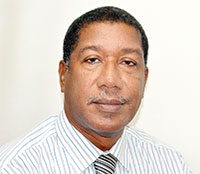The world is now experiencing a tragic pandemic. More than three billion people have been ordered by their government into a virtual “lockdown” or a curfew due to the global spread of the COVID-19 virus commonly called the Coronavirus, which causes flu-like symptoms resulting often in death. Consequently, general health and particularly oral health have been suffering collateral damage. So, what can we do as dental patients with an emergency when the universal mitigation mandate is to stay at home or practice social distancing.
It makes sense that dentists, at least for the time being, should only focus on emergencies. Most dental emergencies are when the patient is suffering from some form of toothache. This could range from persistent excruciating pain, dental abscess with a swollen face to an annoying sensitivity on one or more teeth. Other emergencies may consist of a broken denture, tooth or filling. Ultimately, however, it is the dentist who decides what constitutes an emergency, especially in this critical period.
It cannot be over-emphasised that many situations which require emergency dental intervention may have been avoided in the first place. For example, teeth do not become diseased overnight. A scheduled dental appointment would have confronted an incipient carious tooth or excess calculus long before.
Anyway, you may ask, “If I suddenly get a toothache what can I do about it other than immediately going to see a dentist (which at this time is unlikely)?” You may want to try one of these as a temporary measure for alleviation.
First, take a double dose of the pain killer you would normally take for an ordinary headache. I usually recommend 600 milligrams of ibuprofen (Motrin).
Second, a tiny cotton ball soaked in clove oil, (pulverise a few cloves in a drop of olive oil or any mineral oil and use that to plug the cavity. Third, apply a cold compress to the affected area especially if the corresponding cheek had recently begun to swell. Cold is the only physical agent known which can subdue the process of inflammation because it is inflammation that causes pain and swelling. Occasionally, it would help if cold water is held in the mouth. But one should be careful when using cold or heat with aching teeth.
Fourth, an increase in blood pressure can cause tooth pain. Clearly, the pulp chamber cannot distend to accommodate the changes in pressure because it is located at the centre of the tooth. The augmented pressure, therefore, compresses the nerves which results in the pain. Elevation of the head can decrease the pressure. This method may be found to be useful when a toothache attacks during the hours of slumber. However, even if the relief is achieved, if the pain wakes you up at night, it is serious for the tooth.
Fifth, tooth pain after eating sweet means that the acid produced from the converted sugar is acting on exposed nerve endings in the cavity. The way to resist this is to neutralise the acid. A home remedy is to rinse the mouth with a solution of baking soda. Baking powder has some sodium bicarbonate in it and this can be used also.
The sixth and final recommendation to achieve emergency relief from a toothache is to clean out the cavity ( the direct application of alcohol in the cavity usually numbs it for a short while) and then plug it completely with sugar-free chewing gum.



.jpg)








